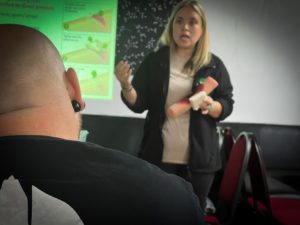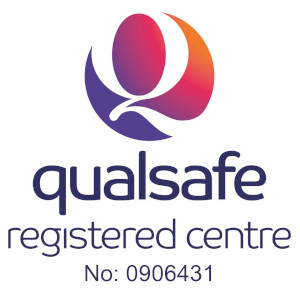Unveiling the Enigma: Understanding Seizures and Their Impact
What causes seizures and are they harmful? In the realm of medical mysteries, seizures often stand as enigmatic phenomena, captivating both scientific inquiry and public curiosity. Defined by their sudden and involuntary disturbances in brain function, seizures can manifest in various forms, from subtle sensory alterations to convulsive episodes that shake the very core of an individual’s existence. Around 50 million people worldwide have epilepsy, making it one of the most common neurological diseases globally.
But what truly triggers these neurological disruptions, and are they as perilous as they seem? Read on to understand the intricate pathways of the brain as we unravel the mysteries behind seizures, exploring their causes, manifestations, and the crucial question: just how harmful are they?
What Are the Different Seizures?
Seizures are classified into several types, each characterised by distinct symptoms and patterns of brain activity. Here’s an overview of the main types of seizures:
- Generalised Seizures: These seizures involve widespread electrical activity in both hemispheres of the brain and typically affect consciousness.
a. Tonic-Clonic (Grand Mal) Seizures: This type of seizure involves two distinct phases. The tonic phase is characterised by stiffening of the muscles, loss of consciousness, and often a cry or vocalisation. This is followed by the clonic phase, marked by rhythmic jerking movements. Tonic-clonic seizures can be dramatic and are often associated with convulsions.
b. Absence Seizures (Petit Mal): Absence seizures are brief episodes of impaired consciousness, often lasting only a few seconds. During an absence seizure, the person may stare blankly, appear unresponsive, and may have subtle movements like eye blinking or lip smacking. They typically occur in children and may be mistaken for daydreaming. These usually only last for a few seconds.
c. Myoclonic Seizures: Myoclonic seizures involve sudden, brief muscle jerks or twitches that can affect a specific part of the body or the entire body. These seizures may occur in clusters and can be mistaken for normal muscle movements.
d. Atonic Seizures: Also known as drop attacks, atonic seizures cause sudden loss of muscle tone, leading to a person collapsing or falling. They are characterised by a brief loss of consciousness and can result in injuries due to falls.
- Partial (Focal) Seizures: These seizures originate in a specific area of the brain and may or may not affect consciousness.
a. Simple Partial Seizures: Simple partial seizures do not impair consciousness but can cause unusual sensations or movements, such as tingling, twitching, or hallucinations. The symptoms depend on the area of the brain affected.
b. Complex Partial Seizures: Complex partial seizures involve altered consciousness or awareness. The person may exhibit repetitive movements, behaviours, or automatisms, such as lip smacking, chewing, or fidgeting. They may also appear confused or disoriented.
c. Secondarily Generalized Seizures: Partial seizures that spread to involve both hemispheres of the brain, leading to generalised seizure activity, are termed secondarily generalised seizures. They often start as focal seizures before evolving into generalized tonic-clonic seizures.
- Other Seizure Types:
a. Febrile Seizures: Febrile seizures occur in young children in response to fever and are relatively common. They typically involve generalised convulsions but are generally harmless and do not cause long-term brain damage.
b. Non-Epileptic Seizures: Non-epileptic seizures, also known as psychogenic or dissociative seizures, resemble epileptic seizures but are not caused by abnormal electrical activity in the brain. Instead, they may be triggered by psychological factors such as stress or trauma.
- Stroke-Related Seizures:
- Ischemic Stroke: In ischemic stroke, which occurs due to a blockage in a blood vessel supplying the brain, seizures can occur either during the acute phase of the stroke or as a delayed complication. Seizures occurring within the first 24 hours of a stroke are termed “early seizures,” while those occurring later are referred to as “late seizures.” Early seizures may be associated with more severe strokes and a higher risk of subsequent epilepsy.
- Haemorrhagic Stroke: Haemorrhagic stroke, caused by bleeding in the brain, also carries a risk of seizures. Subarachnoid haemorrhage, where bleeding occurs in the space surrounding the brain, is particularly associated with a higher incidence of seizures.
- Post-Stroke Epilepsy: Some individuals who experience a stroke may develop epilepsy, characterised by recurrent seizures, in the weeks, months, or even years following the stroke. The risk of post-stroke epilepsy is influenced by various factors, including the type, location, and severity of the stroke.
- Seizures in Head Injury:
- Traumatic Brain Injury (TBI): Seizures are a well-recognised complication of traumatic brain injury, ranging from mild concussions to severe head trauma. Seizures may occur immediately following the injury (early seizures) or develop later as a delayed complication (late seizures or post-traumatic epilepsy).
- Epidemiology: The incidence of seizures following head injury varies depending on factors such as the severity and mechanism of injury. Severe traumatic brain injury is associated with a higher risk of seizures compared to mild or moderate injuries.
What causes seizures and are they harmful?
How to Treat Someone who is Having a Seizure?
Now we understand what causes seizures and are they harmful they can be, what do you do when someone is having a seizure? If you encounter someone experiencing a seizure, it’s essential to stay calm and take appropriate steps to ensure their safety. Here’s a step-by-step guide on how to assist someone having a seizure:
- Stay Calm: While witnessing a seizure can be distressing, staying calm is crucial. Remember that most seizures end on their own and do not require emergency medical attention unless they last longer than five minutes or if the person is injured.
- Ensure Safety: Gently guide the person away from any objects or hazards that could cause injury during the seizure, such as sharp objects, stairs, or hot surfaces. Clear the area around them to create a safe space.
- Protect the Head: If possible, place something soft (like a folded jacket or towel) under the person’s head to cushion it and prevent injury.
- Do Not Restrain: Do not restrain the person or try to hold them down during the seizure. Allow the seizure to run its course naturally.
- Time the Seizure: Note the time when the seizure starts. This information can be helpful for medical professionals if the seizure lasts longer than usual.
- Monitor Breathing: Check to see if the person’s breathing is normal. If they are having difficulty breathing or if their lips turn blue, gently roll them onto their side to help keep the airway clear once the seizure has stopped.
- Stay with the Person: Stay by the person’s side and provide reassurance. Speak calmly and softly to them, letting them know that they are safe and that you are there to help.
- Do Not Offer Food or Drink: Refrain from offering food or drink until the person is fully alert and able to swallow safely to avoid choking.
- Time the Seizure: Continue to monitor the duration of the seizure. Most seizures last for a few seconds to a few minutes. If the seizure lasts longer than 5 minutes, or if another seizure begins shortly after the first one ends, seek emergency medical assistance.
- Recovery Position: Once the seizure ends and the person begins to regain consciousness, help them into a comfortable position on their side to prevent aspiration and facilitate breathing.
- Stay Calm and Reassuring: As the person regains consciousness, stay calm and provide reassurance. They may feel confused, disoriented, or tired after the seizure.
- Seek Medical Attention if Necessary: If it’s the person’s first seizure, if they are injured during the seizure, if the seizure lasts longer than five minutes, or if they have difficulty breathing afterward, seek medical attention promptly.
Remember that every seizure is different, and the level of assistance needed may vary depending on the individual and the circumstances. The goal is to ensure the person’s safety and comfort until the seizure ends and they regain consciousness. If in doubt, always seek medical help.
Our First Aid at Work Courses
All of our courses are tailored for the group of learners in a fun and friendly way. We consider your start and end times to adapt to your staff schedule. We can add any specifics from your polices, systems of work or previous accidents and risk assessments amendments. On our courses we can add any extra modules or certain previous accidents or near misses. The first aid courses can be adapted to include an element of health and safety. You are really getting a lot for your money and time taking courses with HMB Training Services. Lets teach you what you need to know before giving CPR and what causes seizures and are they harmful?
Emergency first aid at work courses;
The Emergency First Aid at Work course is a vital training designed to equip individuals with the necessary skills to handle emergency situations in the workplace.
First Aid at Work;
The first aid at work courses near me are a comprehensive training course designed to provide individuals with the knowledge and skills necessary to effectively respond to a wide range of medical emergencies in the workplace.
Why is it vital to know how to administer First Aid;
- Reduce accidents and injuries in your workplace
- Quick reaction and speed in administrating first aid will help save lives
- Reduce the number of incidents by sufficient trained first aiders
- Become more confident and knowledgeable in treating someone
- Increases safety within the workplace; having first aid training promotes a sense of safety and well-being
- Reduce the cost to the employer; reduce staff absences and fines from HSE
- First aid Training is a form of team-building activity
Why book your Training with HMB Training Services Ltd
How can HMB Training Services help you? HMB Training Services was created in August 2016 by founder and director Heather Marie Bird. Heather has worked at large companies such as Cat Finning and A-Plant as well as smaller companies and schools.
HMB Training Services can help you with the following:
- Emergency First Aid
- First Aid at Work
- Re-qualifying First Aid
- Annual First Aid refreshers
- Health & Safety
- Manual Handling
- Fire Awareness
- Fire Marshall
- Mental Health First Aid
We can help manage your certifications by reminding you when renewals become due so that you don’t have to keep track of everyone’s individual renewal dates.
We can offer times to suit your business needs and can visit your company to train groups of four or more people. Our training sessions are adaptive to the audience and we can arrange to include any additional modules that may be considered relevant for your particular business.
Read more blogs here: https://www.hmbtrainingservices.co.uk/latest-news
Additionally, please do call us on 01543 453338 to see how we can help with delivering group training courses and would like to know more on what causes seizures and are they harmful, please do get in touch.



